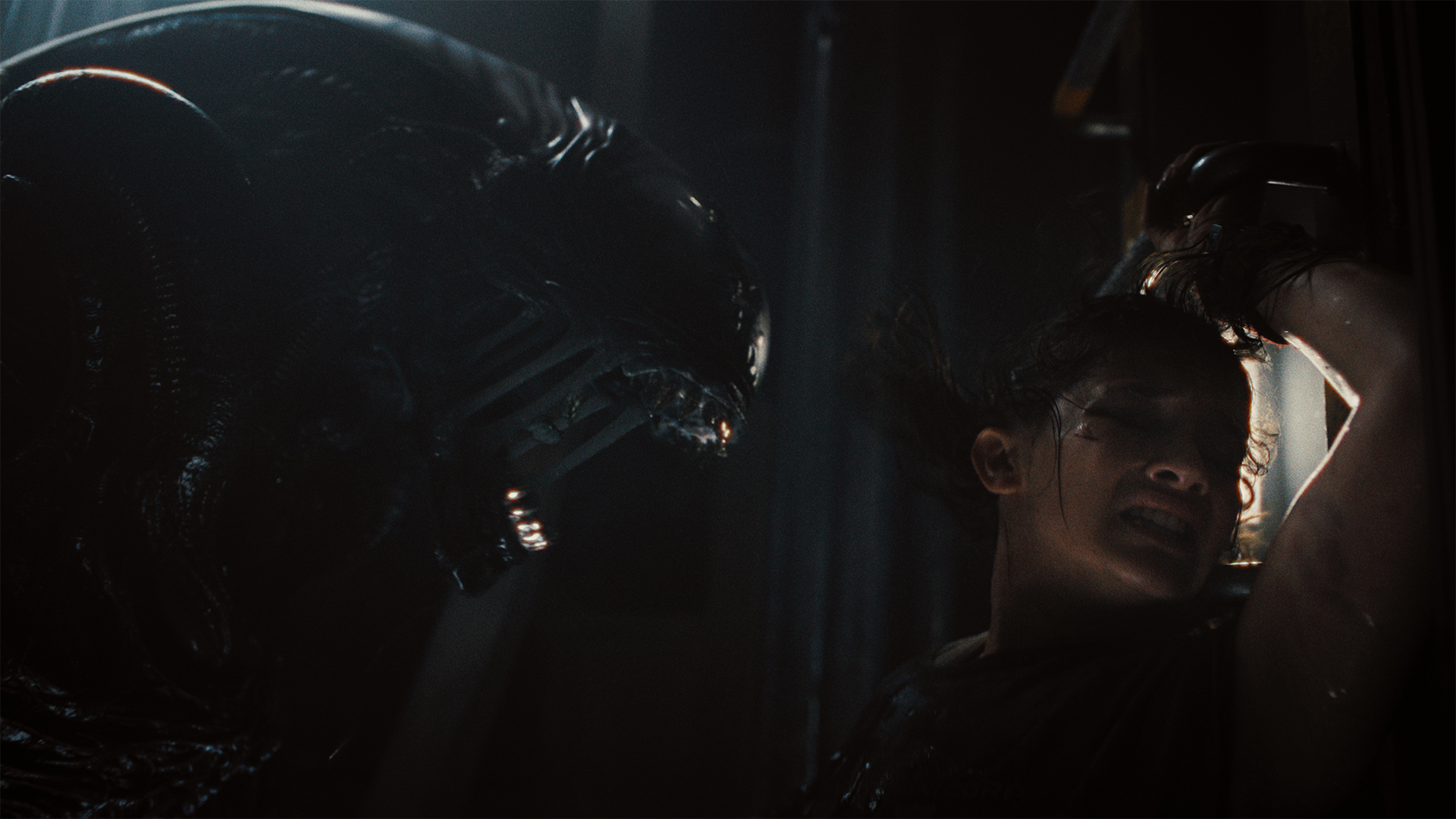
Fede Alvarez has a question for Total Film: "What do you prefer, Alien or Aliens?" But before TF can respond with a well- rehearsed speech ("Objectively? They're both unimpeachable masterworks. Subjectively? Aliens all day, baby!"), Alvarez reveals this is a hypothetical with a point. "I think that's a perverse question," the straight-talking Uruguayan filmmaker says over Zoom in late April. "You should never be put through that choice."
Alien: Romulus is his answer to that 'perverse question' of apples and oranges. Describing the film as "an amalgamation of Alien and Aliens on many levels", everything from the environmental design to the pacing and the way the returning bestiary of Giger-accurate creatures is utilised in Romulus exists on a spectrum from the shadowy, slow-burn chills of Alien to the muscular, adrenalised thrills of Aliens.
"Every day we were like, 'What movie are we making today?'" says star Cailee Spaeny (Priscilla, Civil War), who has the unenviable task of following Sigourney Weaver's Ellen Ripley as the new face of the series, while the xeno-slayer-in-chief is two decades into a peaceful 57-year hypersleep. "'Are we making Alien or Aliens? What are we going to channel today?' Because they're so different in tone."
The idea to smash together two famously divergent classics is inspired to the point that it's surprising no one else had thought to do it in almost 40 years. The subsequent sequels may have much in them to recommend, but it's hard to argue with the fact that the Alien films reached their zenith with the first two instalments. And while the Ridley Scott-directed prequels are ambitious to a fault, the move away from interstellar terror towards more philosophically minded, horror- tinged sci-fi epics left ample room for a stripped-back return to Alien at its most primal.
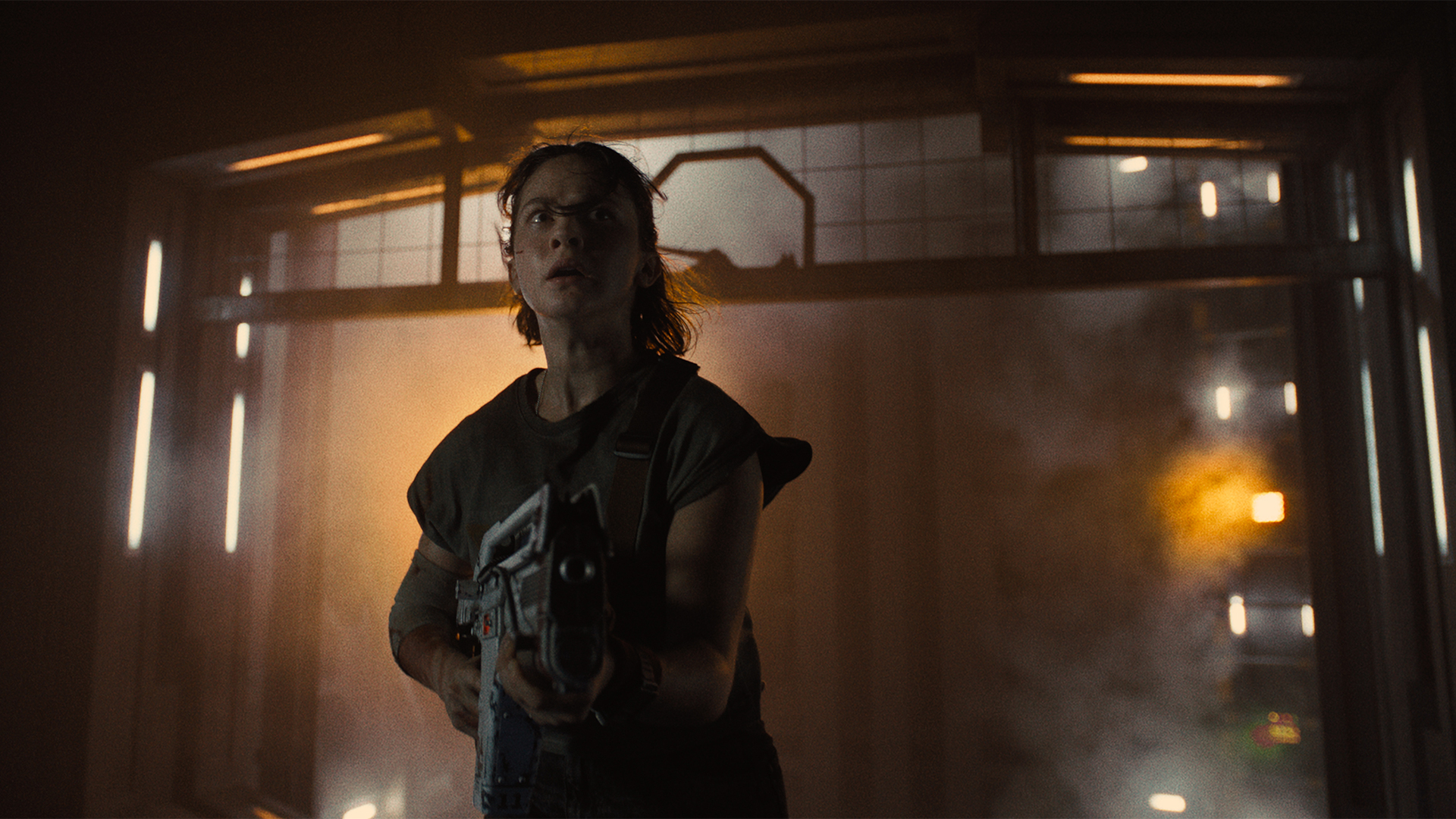
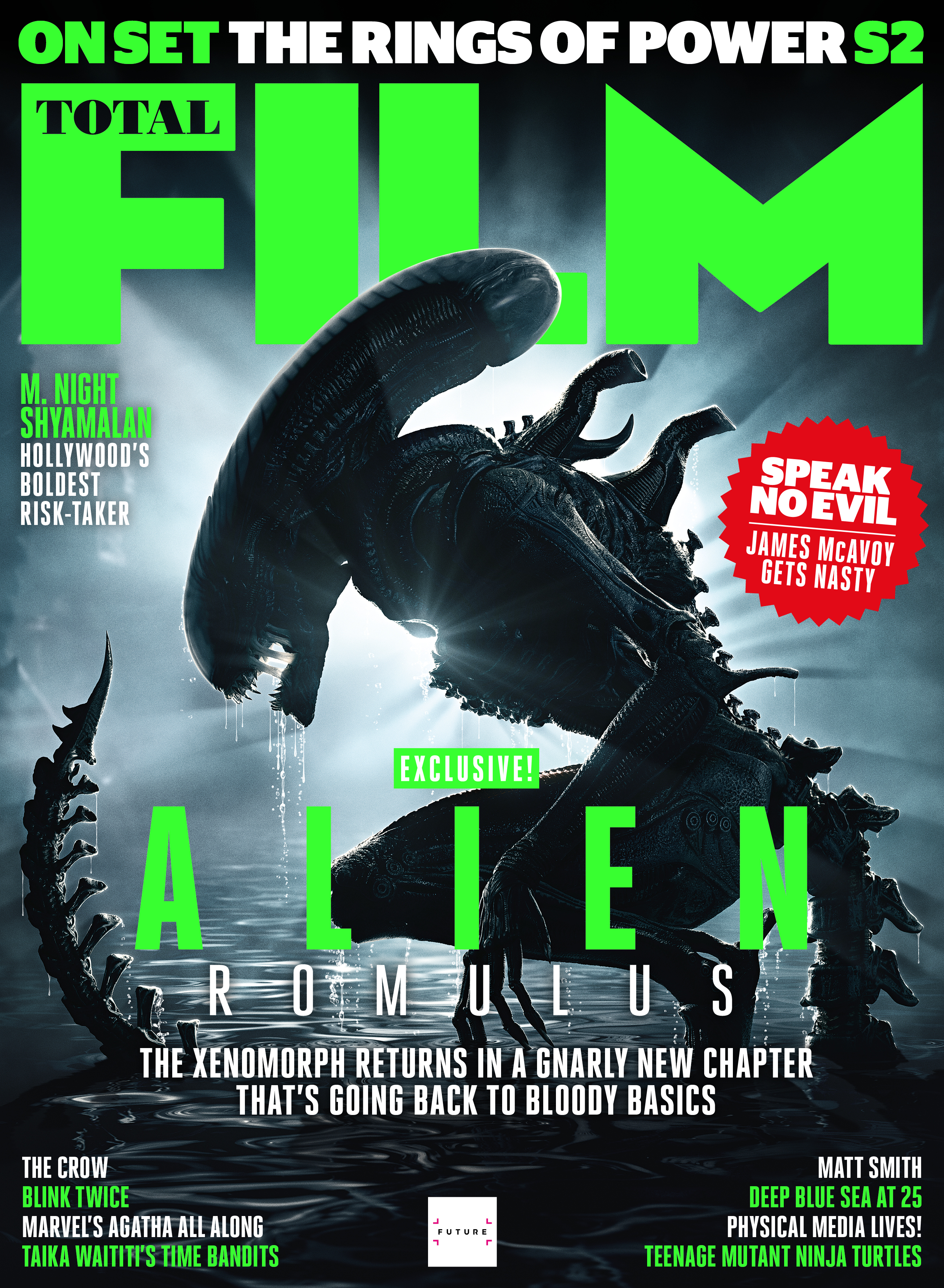
This article first appeared in Total Film magazine 353. You can buy a copy right here.
"That was what I was missing, in a way," says Alvarez, who has impressive form reimagining horror classics, having helmed 2013's vicious Evil Dead remake. "It's not that there's no horror in Prometheus and Covenant, but they're not horror movies. The first one, above all, is a pure horror movie. Like Ridley says, he wanted to do The Texas Chain Saw Massacre in space. That's what I wanted; to see the xenomorph again, but in the setting of a pure-blood horror movie."
Following the success of his horror thriller Don't Breathe, Alvarez found himself informally pitching this vision at Scott's production company Scott Free in 2017, during a general meeting with the legendary filmmaker. Drawn to the idea of an Alien movie featuring a fresh- faced line-up of xeno-victims-in-waiting, Scott and 20th Century Studios called on Alvarez and frequent collaborator Rodo Sayagues to start work on the script for Romulus several years later, in October 2021.
On their inspiration board throughout the writing process was a picture of Spaeny, who would go on to be cast as Rain Carradine. Speaking from her home in Los Angeles, where framed movie posters adorn the wall – including an Alien quad opposite the sofa – Spaeny recalls an early, formative experience with Scott's classic. "I have an initial memory of it being on in the house on a Saturday morning, and my dad watching it, and me going, 'Oh, yeah. What's this about?'"
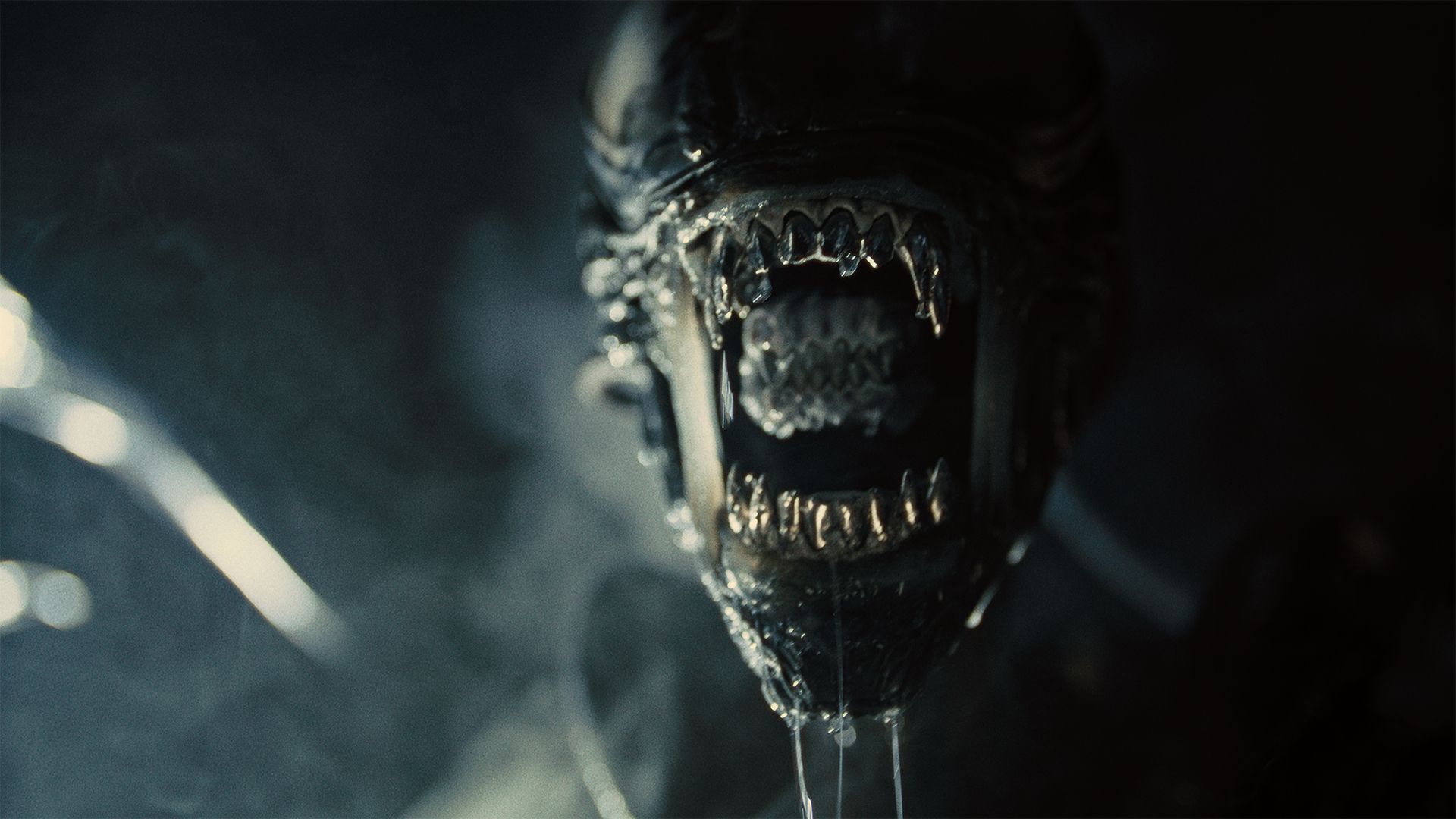
I wanted to see the xenomorph again, but in the setting of a pure-blood horror movie
Fede Alvarez
Spaeny says, smile widening. "And then the chestburster scene coming up, and me going, 'Oh my god, I cannot watch this.' It was so traumatic. But then I'd slowly come back and peek…" Spaeny's experience closely mirrors that of her co-stars, most of whom (prepare to feel like the desiccated husk of a Space Jockey) weren't born when the fourth instalment Alien: Resurrection was released in cinemas in 1997, so are catching up on the series many years after the fact. For Alvarez, the idea of centring the story on the series' first 20-something crew stemmed from an early scene in the Special Edition of Aliens in which Hadley's Hope is glimpsed before the fall, with young children playing in the corridors and riding around on Weyland-Yutani trikes.
"I always thought, 'Wow, what would it be like for those kids to grow up in a terraforming colony that still needs another 50 years to be habitable?' You're probably going to take the same job as your parents. What's the hope?" questions Alvarez. "Maybe it's because I'm from Uruguay and the idea of growing up in a place where you know how far you can get, and the things that happen there, and the things that will never happen there. So I always connected with those characters."
The Kids aren't alright
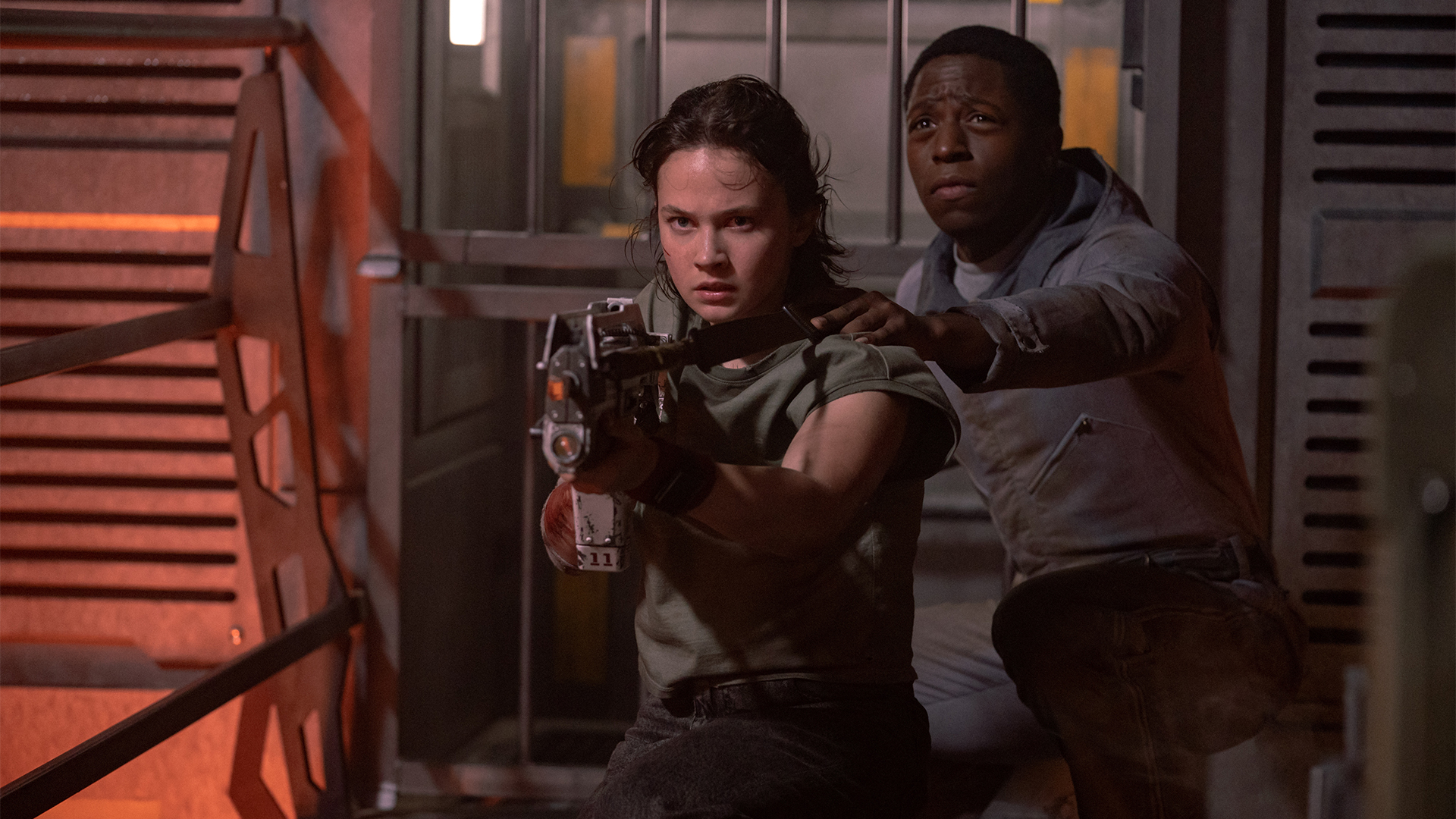
Hope is in desperately short supply on Jackson's Star, a Weyland-Yutani 'shake-and-bake' mining colony shrouded in perpetual night on the dark side of the planet, because there's no atmosphere (yet) to filter out their sun's radiation. Surface-bound for her entire life, 20-year-old Rain has never even seen natural light. 'We're trying to bring it back to these blue-collar people,' Spaeny says. "We wanted the heart of it – where these kids came from – to feel authentic, as much as we possibly could."
Rain's ex-boyfriend Tyler (Archie Renaux) and Bjorn (Spike Fearn) both work the mines and have a better reason than most to want to leave their futile lives behind. A lifeline arrives in the form of a decommissioned Weyland-Yutani space station – the Renaissance – which is pulled into orbit near Jackson's Star, offering the potential of a way out for any enterprising scavengers. Key to this mission are Bjorn's adopted sister Navarro (Aileen Wu) – the technically minded pilot of their rust-bucket vessel Corbelan IV – and Tyler's 'sweetheart' sister Kay (Isabela Merced).
"They're taking a shot at making their future a little bit better than what it looks like on their home planet," says Merced, who has James Gunn's Superman (where she'll appear as Hawkgirl) and the second season of The Last of Us to come in 2025. "They all have that desperation to find a better place. It makes it all the more upsetting and saddening when the movie ends how all Alien movies end…"
Also along for the ride are Rain and her surrogate brother Andy, aka ND-255. An 'artificial person', as Bishop would have it, Andy is the closest thing Rain has to family following the death of her parents. Their sibling connection, and the question of whether there can be a true familial love between a human and an android, is the emotional core of the movie according to Alvarez, and is tested under the most extreme circumstances when face-hugging, chest-bursting, pharyngeal-jawed hell inevitably breaks loose aboard the Renaissance. "In the first one, obviously Ripley does not trust synthetics," says Spaeny. "And it's switched around where my character is doing everything she can to protect [Andy], because that's her only family."
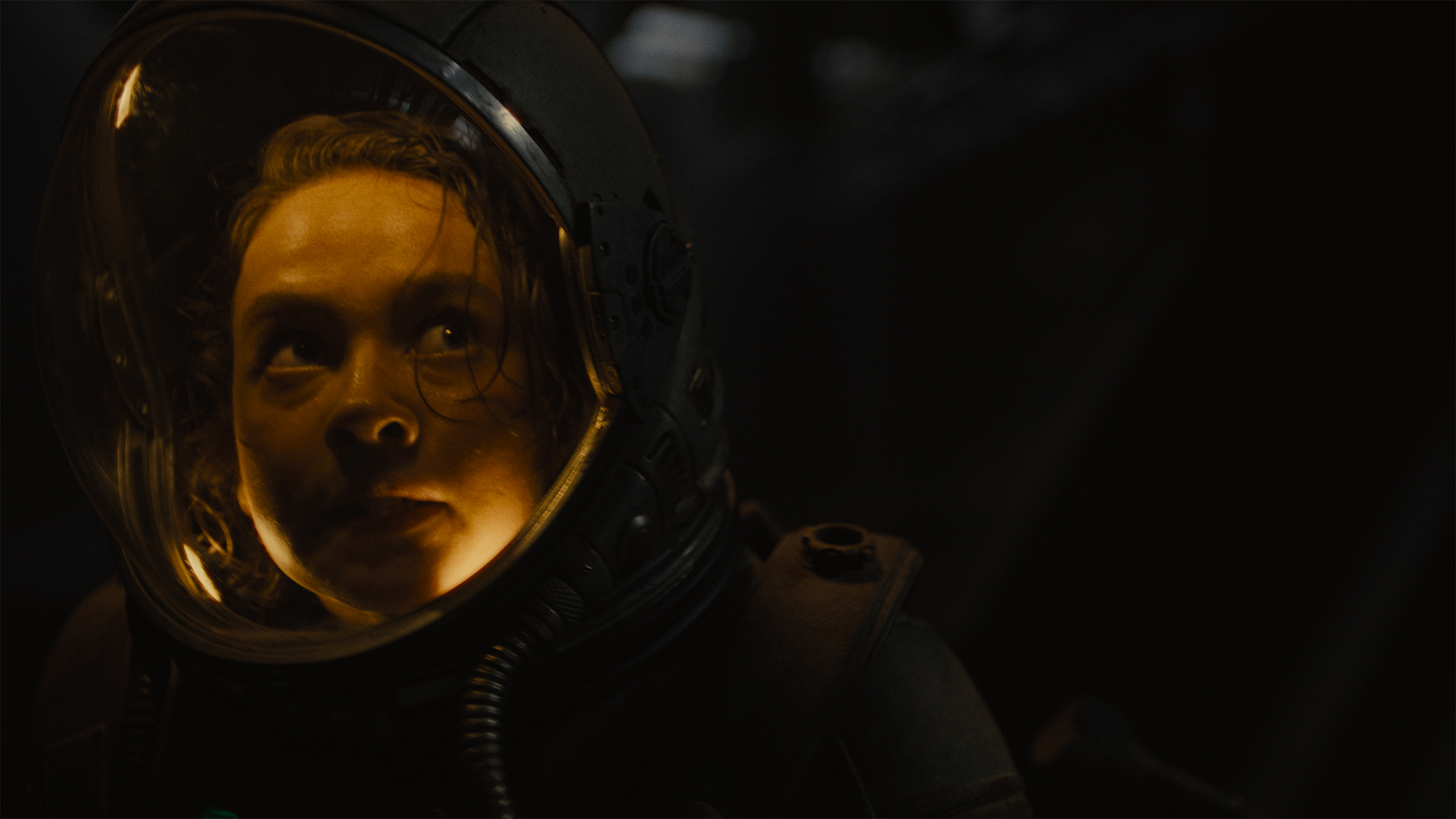
"We're trying to bring it back to these blue-collar people... we wanted the heart of it to feel authentic"
Cailee Spaeny
"It's rather beautiful, actually," adds David Jonsson, the Rye Lane and Industry star making his studio-movie debut with Romulus. "It's a real first [for the series]. It adds a coming-of-age story. With Alien, you know that there's space, there's aliens, and you've got to kill them or be killed. Whereas with this wonderful brother-and- sister relationship, there's so much to play with."
Like Alien's Ash, Andy is a few transistors short of a circuit board. In one early scene glimpsed by TF, the synth freezes up in the middle of a facehugger attack, making him as much a liability as an asset. Jonsson initially auditioned for a 'smaller part' before being offered the role of Andy, and didn't take the responsibility lightly. "I'm not going to lie to you, man. It does feel marginally intimidating," says Jonsson, who is following Ian Holm (Alien), Lance Henriksen (Aliens and Alien3), Winona Ryder (Alien: Resurrection), and Michael Fassbender (Prometheus and Alien: Covenant) as the series' latest synthetic. "It feels like you're standing on the shoulders of giants. But I understand why I'm here. There's a real big first with my synthetic. All those actors are brilliant at zooming in on fine detail, and I really do think that Fede gave me an opportunity to do that, which I hope comes across."
Standing on the shoulders of giants couldn't apply more to Spaeny, for whom Ripley loomed large. "I had her performance playing on repeat for months. I was sort of hoping that something would seep in," Spaeny notes. "But I never felt intimidated. That role wasn't written for a woman, so there was real freedom. And because Sigourney injected all of herself into it, that then opens up any other female who's entering this franchise into not ever feeling that weird weight or pressure of playing a female lead."
Spaeny did allow herself to channel her inner Ripley for at least one scene: the Aliens-homaging moment glimpsed in the film's first trailer in which Rain steps off a cargo elevator while packing a proto-Pulse Rifle."'In a shot like that, you've got to lean in. You just go, 'OK. Get those leaf-blowers ready! I'm going to hit that mark as slow as I possibly can,'" she says with a chuckle. "I don't feel that cool, but it definitely looks cool!"
Keeping it real
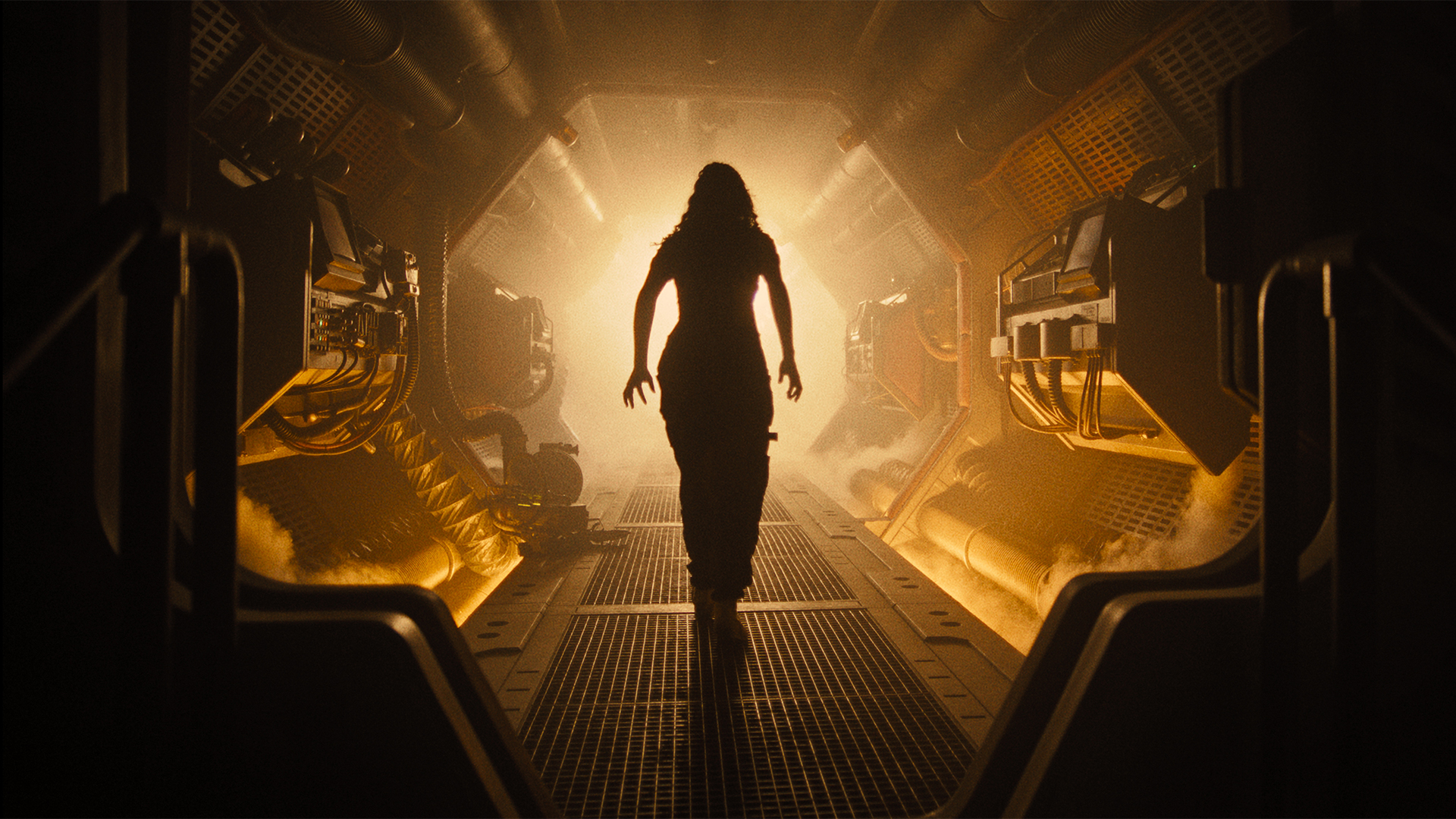
Filming from late March to early July 2023 at Origo Studios in Budapest, on the same colossal soundstages as Dune, Poor Things, and Blade Runner 2049, Alvarez had a specific vision of how to make Alien: Romulus – one that didn't necessarily tally with the way studio movies are made now. "You always have to pick your battles as a director, and those were the battles he chose to fight," says Spaeny. "It was: 'I want this to be as practical as possible. I want to shoot in chronological order. And I want the same craftsmen and artists and puppeteers from the previous movies.'"
"We really went above and beyond to create a world that was exciting for me to be in," Alvarez says – the opening salvo of a near-10-minute monologue, such is his passion about the film's practically minded production, starting with the film's sprawling, interconnected sets. "My movies are a bit of a theme park for the actors," he explains. "Because I attempt to create as many of the sets as I can, [linked] together, so that you can run through them for a long time – and there's no blue screens. Everything is a true experience for the actors. Hopefully that will translate to the audience's experience."
Alongside production designer Naaman Marshall, Alvarez envisioned a subtle transition between the distinct design aesthetics of Alien and Aliens – from the used retro-future of the Nostromo to the cold industrialism of Hadley's Hope – as the film moves between the twin structures that make up the Renaissance space station: Romulus and Remus. And speaking of the gargantuan Renaissance, even that was built for real. "We had Ian Hunter, who worked on Total Recall and Interstellar, build all the spaceships," Alvarez grins. "He's one of the last great masters of miniatures. What you see in the trailer is an ILM shot, but it was built by hand by Ian Hunter, and it was scanned, and turned into a CG asset. So it always has that handmade texture."
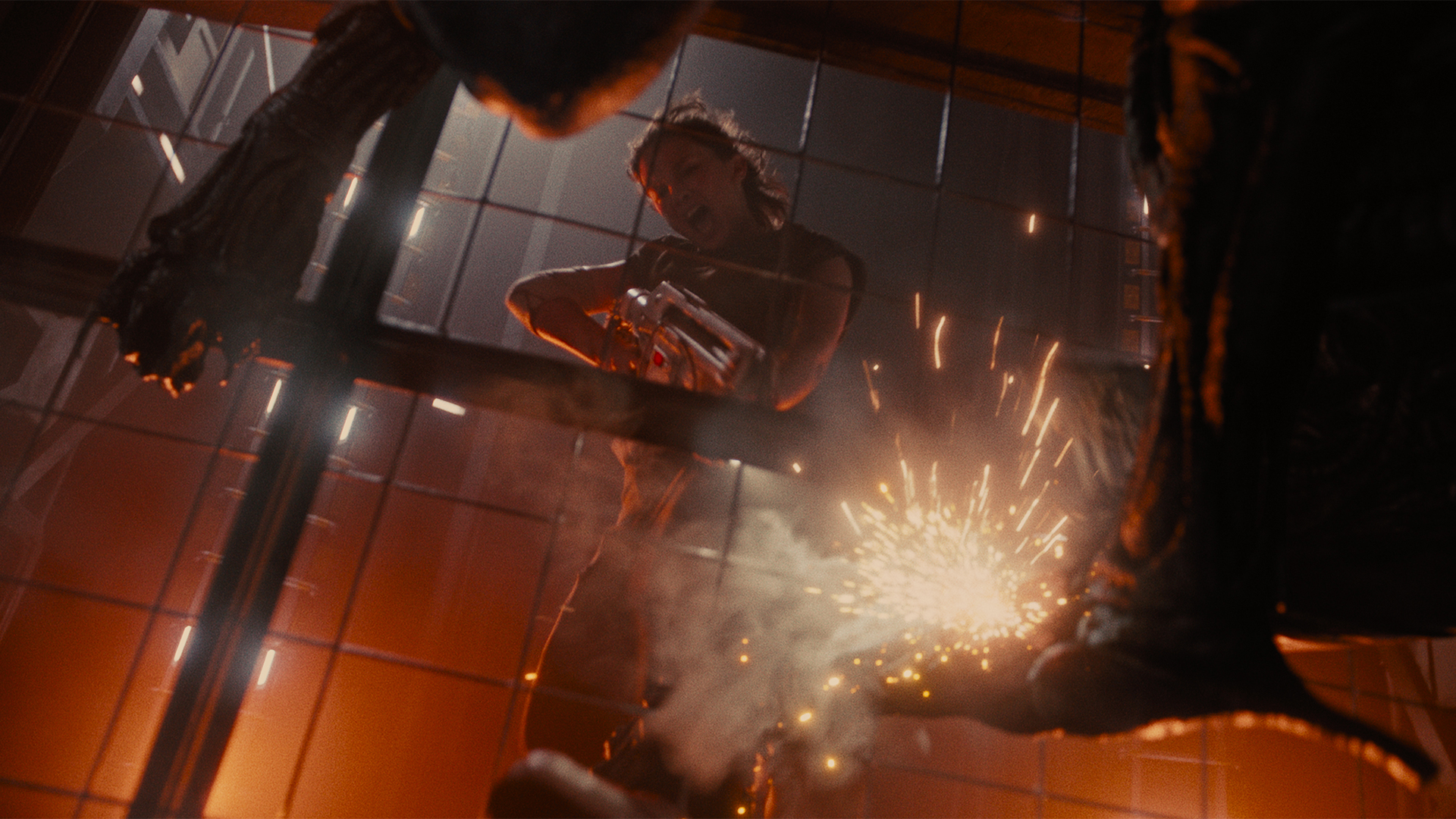
Get ready for Alien: Romulus with our guide on how to watch the Alien movies in order.
But nowhere is Alvarez's commitment to "practical where possible" more evident than with the film's acid-blooded menagerie, the director claiming that "all the creatures were built, and they worked". Bluntly citing a desire to move away from the "jumpy ninja shit" that an all-CG xeno allows for, Alvarez assembled a dream team of collaborators, including Shane Mahan and Alec Gillis – special-effects veterans who worked on Aliens early in their careers. In the face of financial sense, which dictates that one company handle all the work at a discounted rate, Alvarez split the labour: Mahan's Legacy Effects was responsible for all xenomorph matters, Gillis' Studio Gillis worked on chestburster and egg effects, and Richard Taylor's team at Weta Workshop handled the concept design of the facehuggers and weapons manufacturing.
"We had an R.C. facehugger that you could drive around," Alvarez recalls with a smile. "I could chase people around. You'd see it coming, and it looks so fucking real – it was the scariest shit ever. [laughs] We had an animatronic xenomorph as well. Shane built the Queen on Aliens and said, half-jokingly: 'This time we're going to get it right.' Because all these years he's been thinking about the things he could have done better with the Queen, and how it didn't quite work."
Admitting that "it's way easier to just put up a tennis ball, and sometimes people can't tell it's CG", Alvarez – who has a background in visual effects and had no qualms about using CGI where it would make for a better shot – insisted on practical for "close-up interactions" where "nothing beats the real thing". Animatronic technology has also evolved exponentially since the mid-80s, meaning that the mechanical xenomorph "could do a lot of things – it could move fast", according to Alvarez, who also hints at unseen creatures to come.
"There's other things I cannot tell you about because it'd be a spoiler – and actually it's what I'm most proud of," he teases. "There's a thing in the movie that still, today, is the most fantastical thing I saw that's part of the creature effects. Every time I watch it in the movie, it almost makes you think that it's CG because it's so out there. But it's not. It's 100% practical."
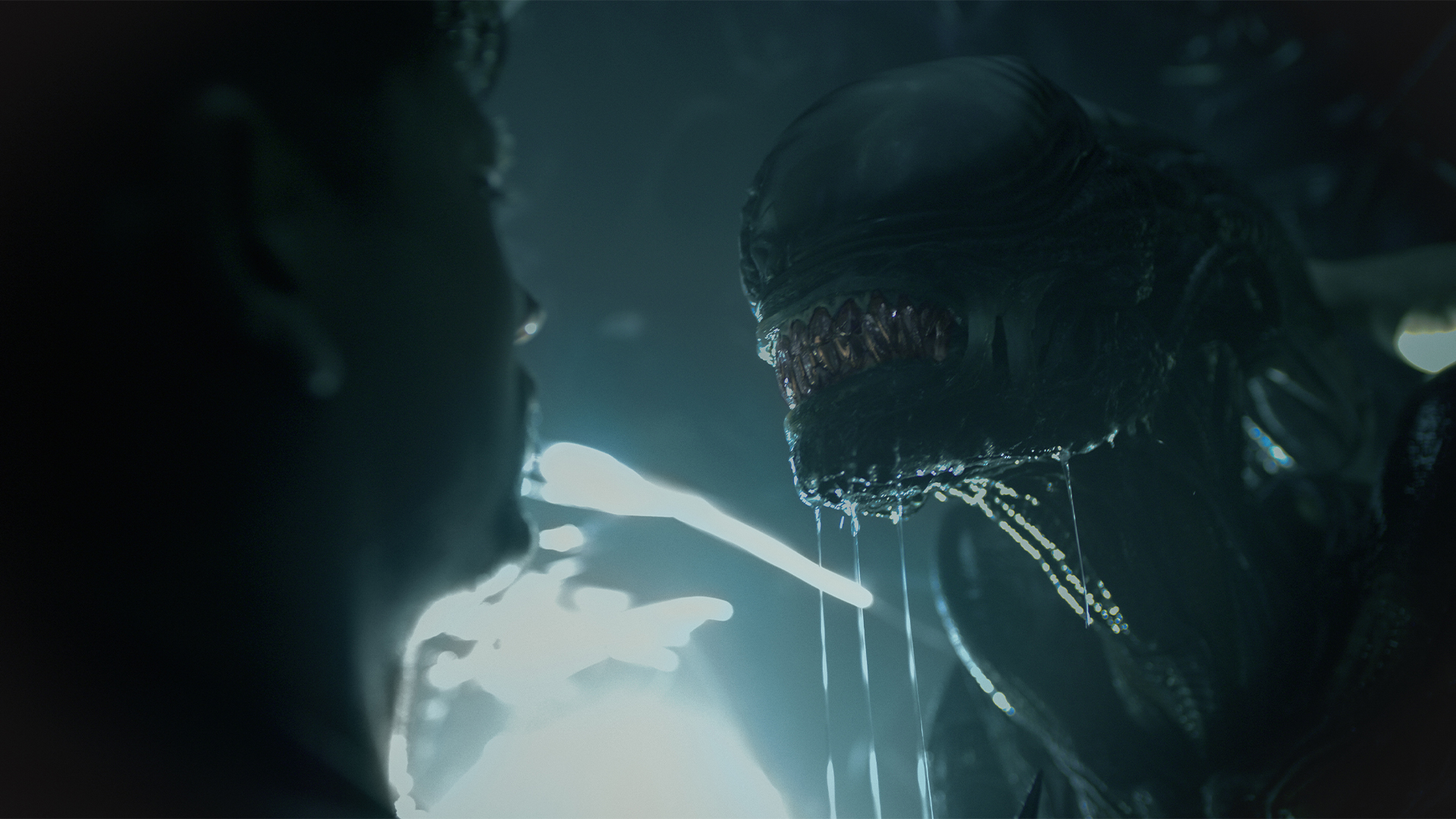
"You can definitely say goodbye to a 12A. If you're going to try to scare people, then you scare them."
David Jonsson
Sometimes, the solutions were pleasingly old-school. "We also had a guy in a suit," Alvarez notes, with pride. "You know, sometimes the guy in a suit works perfectly well, and we needed that. There was even a moment where we had a small creature that we needed to do something. I thought it would be great for stop-motion animation, and we brought Phil Tippett in to do it. And Phil was thrilled to do it."
When CGI did prove necessary "for scope", shots were carefully conceived to be consistent with the film's tangible special effects. "We made sure that the CG was built in a way as if it were a practical element so the creatures moved more like an animatronic than a CG creature," Alvarez points out. The director insists it was necessary to go "above and beyond" in this way, even at the expense of a far more challenging and technical shoot, in service of an experience where immersion for the audience is never broken.
"When you watch the movie, it should never wake you up from the dream," Alvarez opines. "You should believe you're on a spaceship, surrounded by these creatures, and everything feels real, and there's nothing that takes you out of it and makes you think, 'That's got to be fake.' That is definitely the goal."
Fear Factor
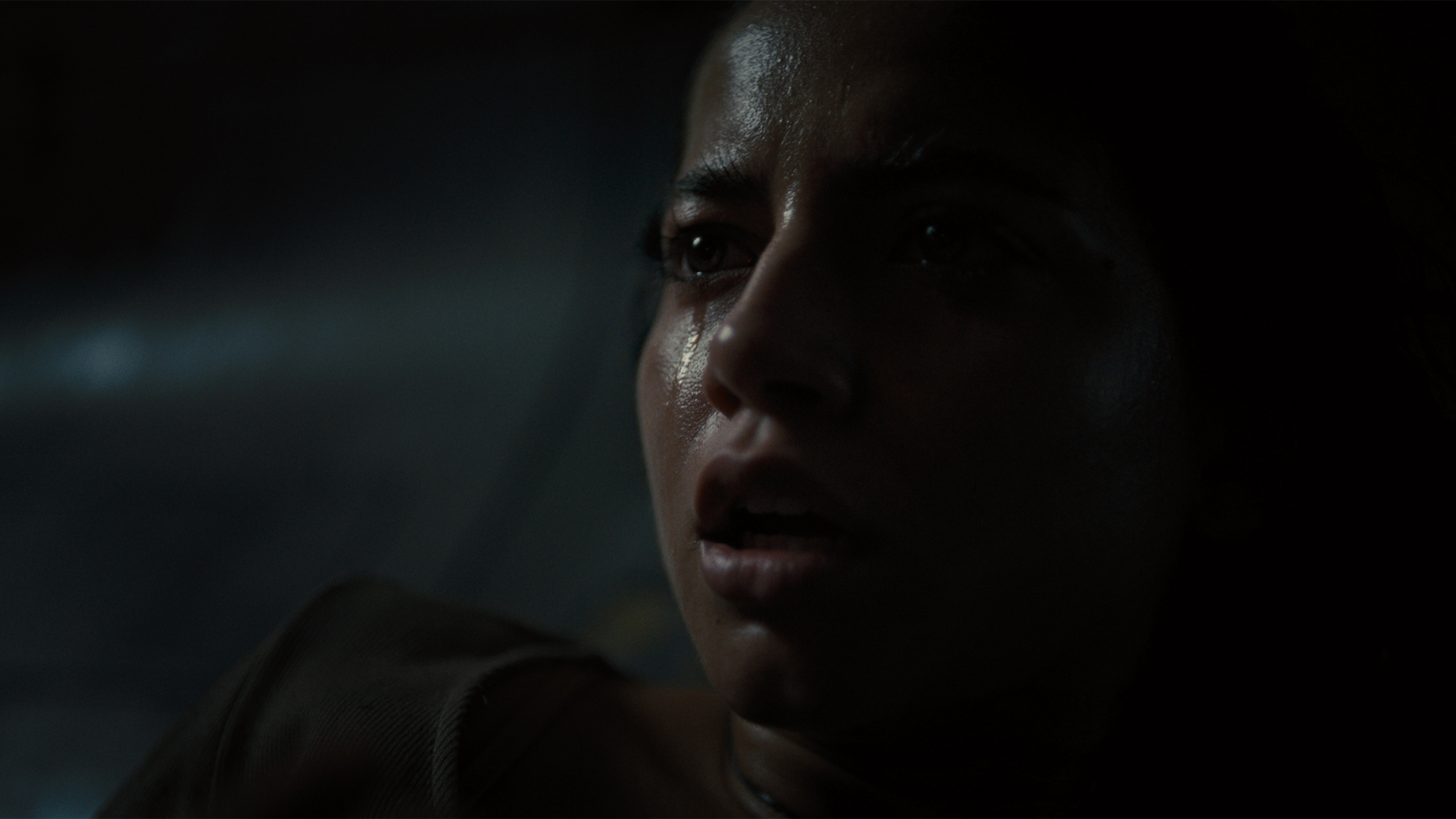
For the cast, the presence of facehuggers, chestbursters, and xenomorphs on all-encompassing sets may not have helped with their stress levels, but it made for a far more visceral and immediate shoot. "Fede really insisted on us feeling the full spectrum of fear," Merced recalls. "I actually don't think the feeling ever got old of seeing a xenomorph in person and up close like that. It really shocked you every time, and sent a chill running up your spine. The details are so amazing."
"When you're watching Jurassic Park or Alien or Tremors – that tangible puppet that is there, brings the film to life, in my opinion," says Spaeny. "And maybe that's just me, coming from an actor's perspective. But I hope that audiences will really understand why Fede fought for that, and that it actually does make a difference."
Alvarez also returned to Alien's playbook in one other crucial respect – the design of the xenomorph, which is almost entirely consistent with H.R. Giger's iconic biomechancial vision. Even the domed head, which James Cameron removed for Aliens, has been reinstated. "It is pretty faithful," says Alvarez. "We're really trying to take the designs back to the original concept. We do embrace the biomechanical aspects of the creatures that were abandoned at one point. There is something about that that I find fascinating and scarier than if it's just an organic creature."
As well as "really trying to embrace the original concepts as close as possible", Alvarez sought to ground the violence in a way befitting of a modern horror movie. Take the film's extraordinarily gnarly chestburster scene, which Alvarez equates to the most violent segment of Planet Earth never aired. "It is done almost like a nature documentary," he says of a sequence which required nine puppeteers to achieve.
"While we were seeing it on set we were joking, and trying to narrate it like Attenborough would. 'The creature is coming out slow. It's looking for the scent of the mother…' The creature's not trying to be scary. The creature is trying to get the fuck out of that cocoon, that happens to be a person. It's almost like this is more realistic in a way, but without betraying all the beautiful things of the original designs."
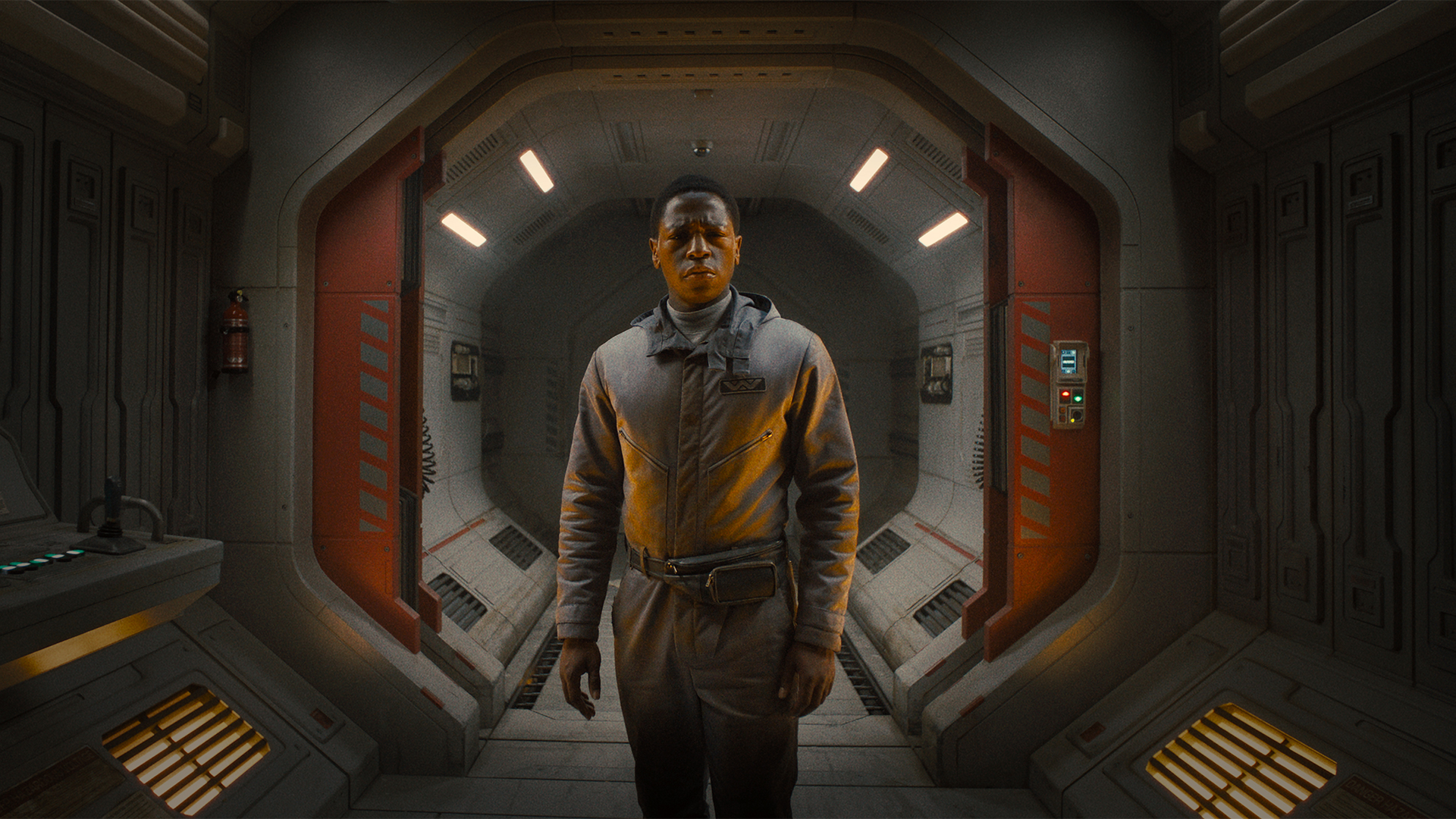
Here's our pick of the best movies and shows to watch before Alien: Romulus.
"I really do believe that there are specific sequences in this film that will scar some kids that sneak into the movie for life," claims Merced, who got a very up-close- and-personal view of one such sequence. "You can definitely say goodbye to a 12A," Jonsson adds with a hearty laugh. "The halfway house with Fede is just not his style. If you're going to try to scare people, then you scare them."
"He doesn't know how to not put that spin on it," Spaeny notes, referencing Don't Breathe and his (literally) visceral reimagining of Evil Dead. "That is just his instinct. He's waiting to do something strange and twisted. And you know he's got it when you're right on the edge of going, 'Should we do this?' That's when you know, 'OK, Fede is in his sweet spot.'"
For Alvarez, the lofty goal with Alien: Romulus is to replicate the impact that the original film, and in particular the chestburster sequence, had on unsuspecting audiences in 1979 – no easy feat at a time when unimaginable horrors are part of an everyday doomscroll. "When you're young, you just feel so jealous about those stories. You're like, 'Oh, man, I wish I could have been there the day no one expected it and the theatre went nuts,'" Alvarez says. "So you want to make sure that it delivers on that promise, that you'll have people commenting on similar things to their friends, like, 'Oof, that scene, man. I was there when it happened. I saw it.'"
Myth making
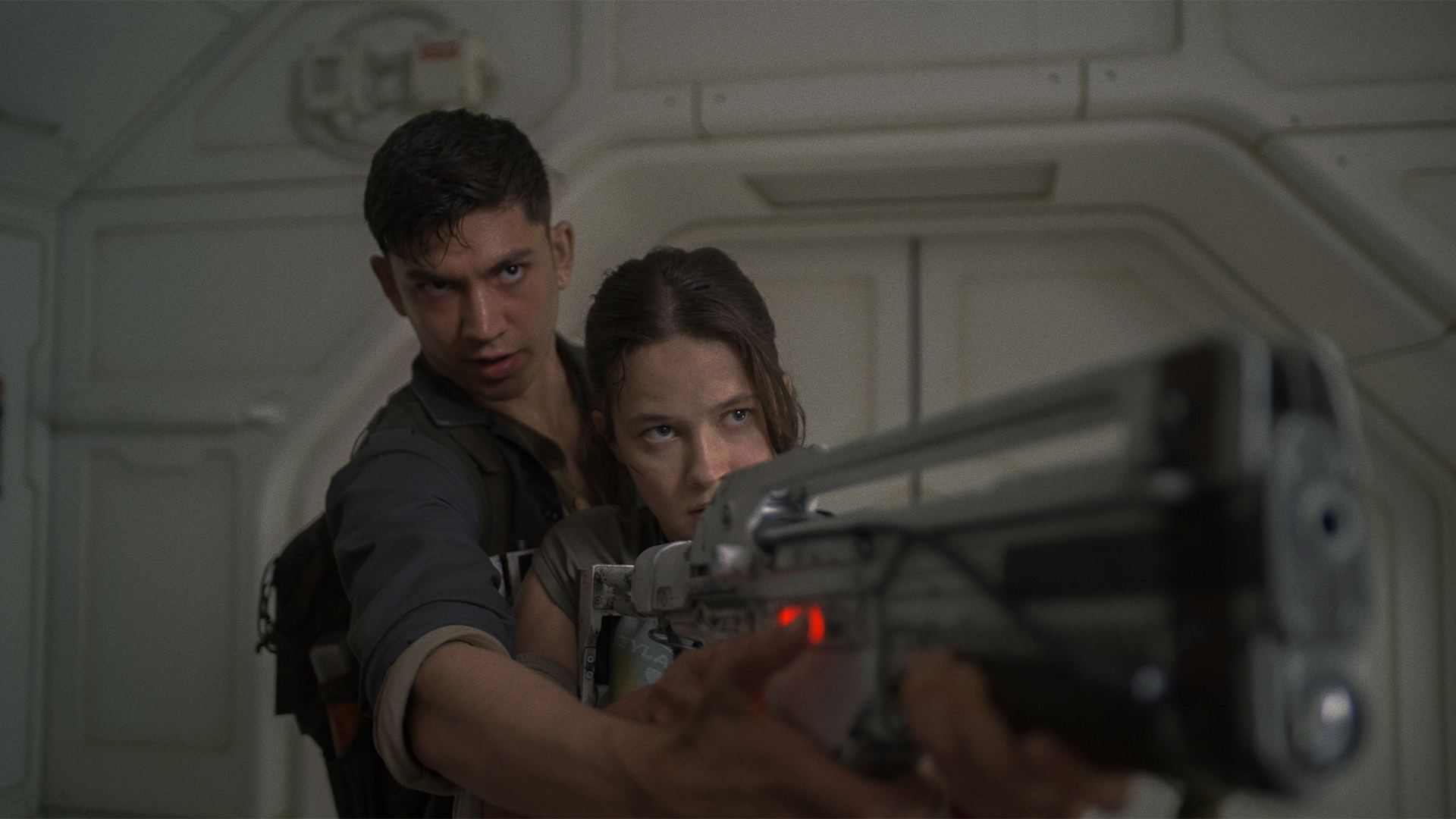
Part of Alien's mystique has always been its hints at a wider mythology – including the mysterious Space Jockey and its derelict ship – that were left unexplained... until Prometheus and Covenant provided answers no one really understood, let alone wanted. Perhaps pointedly, Alvarez claims "there's not time to dwell on philosophy too much in this movie. The pace is so different. When you're running for your life in this very raw, survival-horror way, there's just no time to go there', before acknowledging that there will be organic 'connections' to every Alien movie, and even nods to extended universe stories including comics, books, and games."It is there for the audience that is looking for it."
The film's subtitle itself is the clearest indicator to expect more than a simple scare machine. Tying into Weyland-Yutani's "obsession with imperialist iconography", it is referencing the creation myth of Rome by Romulus and Remus – siblings suckled by a she-wolf before Romulus committed fratricide on his twin brother. "It's one of my favourite parts of the movie, the mystery of 'What's beyond being chased by a creature?'" Alvarez says cryptically, revealing only that the Renaissance is a research station where xeno-experimentation was taking place, and that the title is "directly related to something Weyland-Yutani is doing in the story this time".
It all points to an Alien movie that is simultaneously familiar, while having something strikingly different to offer. "It's a completely new take on it – like a really, completely new take on it – to the point that it's actually a little bit scary," says Jonsson. "As much as it is an homage to the original," adds Merced, "I feel that Fede, as a fan, knew he wanted to see new things, and wanted to be the one to introduce them to the Alien world."
But as Spaeny points out, first and foremost Romulus is a love letter to the series' two defining instalments. "It was so much fun to, timeline-wise, place our story between one and two," the star says with a grin. "As a fan, you're able to connect the dots. So hopefully people can watch Alien, and then Alien: Romulus, and then Aliens. And that will be a satisfying thing." The question of 'what do you prefer?' could soon get a lot more complicated.
Alien: Romulus opens in cinemas on August 16, 2024. While you wait, why not go and watch one of the best Alien movies.







